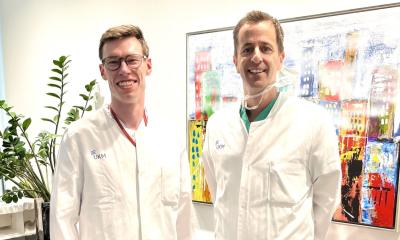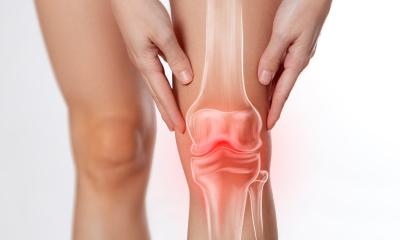Innovative reusable operating theatre clothing
Optimising protective operating theatre clothing in terms of comfort and durability enables significant amounts of waste to be avoided and valuable resources saved.

A current research project sponsored by the German Federation of Industrial Research Associations and running until the start of 2016 is working on developing innovative reusable operating theatre textiles which are more comfortable to wear and at the same time more durable because they can be cleaned in a gentler process.
With this project, the wfk – Cleaning Technology Institute e.V. and the Hohenstein Institute are complying with the requirements of the Closed Cycle and Waste Management Act (KrWG) and also increasing the competitiveness of the German textile industry.
The KrWG, as implemented in the Waste Framework Directive RL 2008/98/EC, has been part of German law since 2012. The reform states that, in order to avoid waste, materials should remain in the production cycle for as long as possible. However, in health care, and especially in hospitals, the trend is in the opposite direction.
In the interests of ease of handling, guaranteed sterility at all times and – apparently – cost considerations, the proportion of disposable operating theatre clothing that is used in hospitals is increasing all the time. The resulting waste amounts to about 3.2 kg of textiles per patient per day which have to be disposed of correctly, equating to an annual mountain of waste of about 1200 kg for every hospital bed.
Medical textiles such as bed covers and operating theatre clothing are classed as licensed medical products and are subject to all kinds of textile technology requirements under the European DIN EN 13795 standard. These include, for example, mechanical resistance, microbiological purity and a barrier effect against fluids. These numerous standards, designed to ensure the safety of the wearer, mean that the thermophysiological wearing comfort of operating theatre clothing, and especially of disposable clothing, is a secondary consideration.
To offset the relatively high procurement cost of reusable protective clothing, it must be able to withstand about 50 to 70 cycles of use and reprocessing. Consequently, the wearing comfort of reusable textiles always suffers – yet comfort is precisely the characteristic for which, in addition to environmental performance, they are superior to disposable textiles.
In the light of this problem, this joint research project is developing innovative reusable operating theatre textiles which offer not only greater comfort but also an extended service life. In the project, the Hohenstein Institute is optimising the materials used for reusable protective textiles to ensure the best possible thermophysiological wearing characteristics.
The research team led by Dr. Bianca-Michaela Wölfling is currently studying the operating theatre clothing that is available on the market with regard to its textile technology and clothing physiology properties. They are looking especially at the interaction between body, climate and clothing, since an imbalance between the production and the transport of body heat not only makes the surgeon and operating theatre team feel less comfortable as they work, but can also impair their alertness and performance. Studies are being carried out using both the Hohenstein Skin Model and volunteers in a climate-controlled chamber, in a range of realistic conditions. Proposals for how operating theatre textiles could be further developed will be produced on the basis of the research results.
At the same time, the wfk is researching cleaning processes which would minimise the thermal and mechanical wear on the protective textiles in order to extend their working life. To make sure that their work is also resource-efficient, the researchers are focusing on pre-activated disinfectant systems and enzymes which are particularly active even at low temperatures.
The reduction in the washing temperature and the mechanical stresses, together with specially developed cleaning and disinfecting routines, have resulted in an innovative cleaning process. Firstly, it enables the protective and thermophysiological textile functions to be preserved better than under the current method. Secondly, it results in an improvement of about 25% in the lifespan of reusable operating theatre textiles.
To sum up, this research partnership is creating better market opportunities for reusable protective clothing in hospitals. It is also ensuring compliance with the KrWG by avoiding waste in the textile medical product sector. The innovative reusable protective textiles offer both improved wearing comfort and a longer service life thanks to resource-efficient cleaning processes. However, in addition to the ecological benefits, the economic benefits of the research project should not be overlooked. Expanding the market for reusable operating theatre textiles increases international competitiveness and so helps to safeguard jobs in the German textile industry. At the same time, hospitals can potentially save about 12.9 million euros as a result of the extended usability of protective textiles.
Source: German Federation of Industrial Research Associations
24.11.2014











